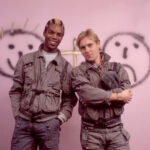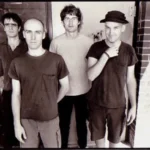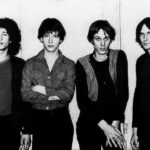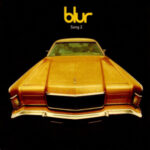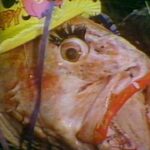 Belle and Sebastian are one of the most beloved indie pop bands of the past three decades. With their delicate melodies, intricate storytelling, and bookish aesthetic, they have carved out a unique space in the world of alternative music. Emerging from Glasgow, Scotland, in the mid-1990s, Belle and Sebastian blended wistful lyrics with richly textured instrumentation, creating a sound that was at once nostalgic and deeply personal.
Belle and Sebastian are one of the most beloved indie pop bands of the past three decades. With their delicate melodies, intricate storytelling, and bookish aesthetic, they have carved out a unique space in the world of alternative music. Emerging from Glasgow, Scotland, in the mid-1990s, Belle and Sebastian blended wistful lyrics with richly textured instrumentation, creating a sound that was at once nostalgic and deeply personal.
Over the years, they have evolved from cult darlings to internationally respected musicians, influencing countless bands while staying true to their DIY roots. Whether through their poetic lyrics, cinematic approach to music, or their enduring devotion to their fans, Belle and Sebastian remain one of the most significant indie bands of their time.
In this deep dive, we will explore the band’s origins, their rise to cult status, their creative evolution, and their lasting impact on indie music.
The Origins of Belle and Sebastian: A Glasgow Fairytale
The Band Forms in a College Project (1994–1996)
The story of Belle and Sebastian begins at Stow College in Glasgow, Scotland, where Stuart Murdoch, the band’s primary songwriter and vocalist, was studying music business. Murdoch had spent much of his early twenties struggling with chronic fatigue syndrome, a condition that kept him largely isolated and introspective. During this period, he began writing the delicate, literary songs that would define the band’s sound.
Through a college music business course, Murdoch and bassist Stuart David recorded a set of demos with local producer Alan Rankine of The Associates. The project caught the attention of Stow College’s Electric Honey label, which was designed to help students release music professionally.
The result was Tigermilk (1996), an album that was initially pressed in only 1,000 vinyl copies and intended as a one-time project. However, the album’s unique mix of melancholic storytelling and whimsical arrangements quickly caught the attention of the British indie scene, leading to widespread demand.
The Expansion of the Band
As Belle and Sebastian gained momentum, Murdoch assembled a proper band, which included:
- Isobel Campbell (vocals, cello)
- Chris Geddes (keyboards)
- Richard Colburn (drums)
- Stevie Jackson (guitar, backing vocals)
- Mick Cooke (trumpet, additional instruments)
This lineup would go on to define the band’s early years, crafting a sound that was equal parts chamber pop, folk, and 1960s-inspired indie.
The Rise to Cult Status: 1996–2000
If You’re Feeling Sinister (1996): A Landmark Album
Following the underground success of Tigermilk, the band quickly signed with Jeepster Records and recorded their second album, If You’re Feeling Sinister (1996). This album is widely regarded as their masterpiece.
Songs like “The Stars of Track and Field,” “Like Dylan in the Movies,” and “Fox in the Snow” showcased Murdoch’s gift for crafting intimate, character-driven songs. The album painted vivid portraits of lonely outsiders, misfits, and dreamers, all set against delicate, acoustic-driven instrumentation.
Critics and fans alike adored the album, and while it didn’t initially chart well, it grew in stature over time. Today, If You’re Feeling Sinister is considered one of the greatest indie albums of all time.
A Unique Approach to Success
Belle and Sebastian were never interested in traditional rock stardom. They rarely gave interviews, avoided the mainstream press, and refused to play the promotional game that many bands relied on. Instead, they built a devoted fanbase through word-of-mouth, fanzines, and live shows that felt more like intimate gatherings than rock concerts.
This approach only strengthened their mystique. Fans felt as if they were part of a secret club, and Belle and Sebastian’s music became the soundtrack for introverts, book lovers, and indie pop aficionados worldwide.
The Boy With the Arab Strap (1998) and Widening Their Sound
In 1998, the band released The Boy With the Arab Strap, their third album. This album marked a slight shift in their sound, incorporating more upbeat arrangements, jazzier influences, and a greater democratic approach to songwriting.
Tracks like “Sleep the Clock Around” and “A Summer Wasting” demonstrated the band’s ability to craft melodies that felt timeless, while the title track became one of their most enduring anthems. The album was a commercial success, charting in the UK and further cementing the band’s reputation.
Belle and Sebastian also won Best Newcomer at the 1999 Brit Awards, a somewhat ironic achievement considering they had already released three albums.
Creative Evolution and Experimentation: 2000–2010
Lineup Changes and Growing Pains
As the band entered the 2000s, tensions began to rise. Stuart Murdoch had always been the dominant creative force, but other band members, particularly Stevie Jackson and Isobel Campbell, wanted more influence.
This led to albums like Fold Your Hands Child, You Walk Like a Peasant (2000), which featured a wider variety of lead vocalists. While the album had moments of brilliance, it lacked the cohesion of their earlier work.
In 2002, Isobel Campbell left the band to pursue a solo career, marking the end of an era.
Dear Catastrophe Waitress (2003): Reinvention
By 2003, Belle and Sebastian were ready for reinvention. They worked with producer Trevor Horn (known for his work with Frankie Goes to Hollywood and Pet Shop Boys) on Dear Catastrophe Waitress, an album that was shinier, poppier, and more upbeat than anything they had done before.
Songs like “Step Into My Office, Baby” and “I’m a Cuckoo” showed a newfound confidence, and the album received widespread acclaim.
The Life Pursuit (2006) and Becoming Indie Pop Legends
Building on this momentum, the band released The Life Pursuit in 2006. This album showcased Belle and Sebastian at their most playful and groove-oriented, drawing inspiration from glam rock, soul, and funk.
The singles “Funny Little Frog” and “The Blues Are Still Blue” became some of their biggest hits, and the album charted in the US and UK, proving they could achieve commercial success while maintaining their artistic integrity.
Later Years: 2010–Present
Write About Love (2010) and Beyond
As the 2010s progressed, Belle and Sebastian continued to release albums, including:
- Write About Love (2010) – A solid, if somewhat overlooked, addition to their catalog.
- Girls in Peacetime Want to Dance (2015) – A bold experiment with electronic and dance influences.
- A Bit of Previous (2022) – A return to their classic sound, proving their relevance decades into their career.
Legacy and Influence
Belle and Sebastian have influenced countless indie bands, including Camera Obscura, The Decemberists, and Sufjan Stevens. Their storytelling approach to songwriting remains a gold standard in the indie genre.
They have also built a deeply loyal fanbase through their Bowlie Weekender festivals, soundtrack contributions (Juno, High Fidelity), and commitment to their DIY roots.
Conclusion: The Enduring Charm of Belle and Sebastian
Belle and Sebastian’s journey from a Glasgow college project to one of indie music’s most revered bands is a testament to their unique vision. With their introspective lyrics, rich melodies, and unwavering commitment to artistry, they have remained relevant for over 25 years.
They may never be mainstream superstars, but for those who have discovered their music, Belle and Sebastian remain a band to cherish—timeless, evocative, and deeply personal.
This post has already been read 90 times!
